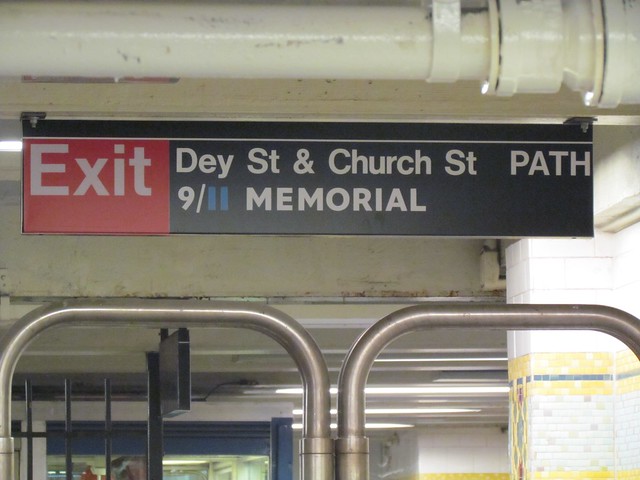
Help Point intercoms are set to arrive at 102 subway stations throughout the city. Photo by Felix Candelaria for the Metropolitan Transportation Authority.
For the better part of a decade, the MTA has been throwing a slogan at its riders. “If you see something, say something,” screams print ads, TV commercials, in-system announcements, placards, posters and everything else in between. The trademarked phrase has been leased out to transit agencies around the world and has become a hallmark of subway systems everywhere. The only problem is that you can’t anything when you see something because there’s no one around to listen.
Last Monday, as I was journeying back from the Upper West Side to Brooklyn, I got on board the IRT at the southern end of the 96th St. entrance. As the stop between 93rd and 94th on Broadway is just a few blocks from my parents’ place, I’ve been using that station my entire life. Lately, though, it’s changed as the booth is no longer staffed 24 hours a day. The lone station attendant sits outside of the fare control area in the new headhouse at 96th St.
When I reached the turnstiles, a pair of guys were hanging out around the entrances. These guys were swipe sellers. They had jammed the turnstiles with folded-up Metrocards, and I guess were trying to sell unsuspecting riders a swipe. They weren’t particularly good at their scheme as they failed to engage two people struggling to make heads or tails of the Metrocard Vending Machines and didn’t react when I pulled out one of cards to swipe through. Still, I figured I would tell someone if I could find anyone.
As I waited for the train to show up, I walked the entire length of the platform and hopped up the stairs at the north end of the station. I couldn’t catch the booth attendant’s eye and found no other MTA employee or NYPD officer around. I saw something; I wanted to say something; and I couldn’t. The MTA’s own staffing decisions and budget cuts had, for better or worse, rendered their slogan incompatible with the reality of the situation. Eventually, my train arrived, and I left to head back home.
It seems I’m not the only one wondering if the MTA’s ubiquitous ad campaign has reached its end. In this week’s New York Magazine, Dwyer Gunn argues against the anti-terrorism slogan. Noting that the campaign hasn’t really netted anyone terrorists and that New Yorkers are immune to weird goings-on underground, Gunn believes that the signs themselves posted in token booths block station agents’ views of their realm. While some minor criminals have been caught, tips to the MTA’s own hotline are relatively sparse, and the constant announcements concerning rider awareness are lost in the noise shuffle.
Gunn’s critique though is missing what I’ve mentioned as the biggest problem: There’s no one to tell. Unless one sees a ticking bomb, how many people are going to try to find that one employee somewhere? What if that one employee is across the street with no free transfer available as is the case at, say, Bergen St. along the IND Culver Line? Train arrives, person leaves, threat of whatever level goes unreported.
Perhaps, though, the MTA is onto something. After a successful pilot, Transit announced on Friday afternoon that the Help Point intercoms will be rolled out to 102 stations as part of the current five-year capital plan. The MTA had initially announced a system-wide rollout earlier this March. With two buttons — one for emergencies and one for contact with the station booth — the blue-light intercoms resemble those found on college campuses across the country.
“The Help Points are, figuratively speaking, light years ahead of the current units that customers see in subway stations,” NYC Transit President Thomas F. Prendergast said. “They will be available to access both information and assistance during emergencies. When coupled with countdown clocks, they add up to the most significant customer communications improvements to be installed in the station environment in a generation.”
Eventually, these intercoms will be everywhere, but for now, it’s a start. At the least, those of us looking to report something — a suspicious bag, shady characters attempting to scam or intimidate other rides, a crime in progress — won’t be left empty-handed. As long as the person on the other end of the line is willing to act and move quickly, saying something after seeing something might not seem as futile as it does today.

 A few weeks ago in early April, New York State Comptroller Thomas DiNapoli released his eighth progress report on the state of the MTA’s capital security program. For a variety of reasons not related to the content of the report, I didn’t have a chance then to cover it then, but it’s worth our attention. As DiNapoli has noted in the past, thanks in part to a legal spat with a contractor and in part to ambitious expectations, the MTA has simply been unable to meet its schedule for implementation.
A few weeks ago in early April, New York State Comptroller Thomas DiNapoli released his eighth progress report on the state of the MTA’s capital security program. For a variety of reasons not related to the content of the report, I didn’t have a chance then to cover it then, but it’s worth our attention. As DiNapoli has noted in the past, thanks in part to a legal spat with a contractor and in part to ambitious expectations, the MTA has simply been unable to meet its schedule for implementation.
